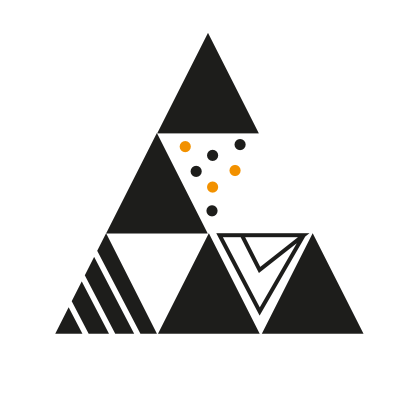Polish cochineal (Porphyrophora polonica), also known as Polish carmine scales, is a scale insect formerly used to produce a crimson dye of the same name, colloquially known as “Saint John’s blood”. The larvae of P. polonica are sessile parasites living on the roots of various herbs—especially those of the perennial knawel—growing on the sandy soils […]
Archives: Natural dyes
Reseda (mignonette) is a genus of fragrant herbaceous plants native to Europe, southwest Asia and North Africa, from the Canary Islands and Iberia east to northwest India. The genus includes herbaceous annual, biennial and perennial species 40–130 cm tall. The leaves form a basal rosette at ground level, and then spirally arranged up the stem; […]
https://en.wikipedia.org/wiki/Isatis_tinctoria Isatis tinctoria, also called woad (/ˈwoʊd/), dyer’s woad, or glastum, is a flowering plant in the family Brassicaceae. It is occasionally known as Asp of Jerusalem. Woad is also the name of a blue dye produced from the leaves[2] of the plant. Woad is native to the steppe and desert zones of the Caucasus, […]
https://en.wikipedia.org/wiki/Turmeric#Dye Turmeric makes a poor fabric dye, as it is not very light fast, but is commonly used in Indian clothing, such as saris and Buddhist monks’s robes.[6] Turmeric (coded as E100 when used as a food additive)[25] is used to protect food products from sunlight. The oleoresin is used for oil-containing products. A curcumin […]
Haematoxylum campechianum is a species of flowering tree in the legume family, Fabaceae, that is native to southern Mexico and northern Central America. The tree was of great economic importance from the 17th century to the 19th century, when it was commonly logged and exported to Europe for use in dyeing fabrics. The modern nation […]
Kermes is a red dye derived from the dried bodies of the females of a scale insect in the genus Kermes, primarily Kermes vermilio. The Kermes insects are native in the Mediterranean region and live on the sap of the Kermes oak. They were used as a red dye by the ancient Greeks and Romans. […]
Henna is a dye prepared from the plant Lawsonia inermis, also known as hina, the henna tree, the mignonette tree, and the Egyptian privet, the sole species of the genus Lawsonia. Henna has been used since antiquity to dye skin, hair and fingernails, as well as fabrics including silk, wool and leather. Historically, henna was used in the Arabian Peninsula, Indian […]
Gamboge is a partially transparent deep saffron to mustard yellow pigment. It is used to dye Buddhist monks’ robes because the color is a deep tone of saffron, the traditional color used for the robes of Theravada Buddhist monks. Gamboge is most often extracted by tapping resin from various species of evergreen trees of the […]
Maclura tinctoria, commonly known as old fustic or dyer’s mulberry, is a medium to large tree of the Neotropics, from Mexico to Argentina. It produces a yellow dye called fustic primarily known for coloring khaki fabric for U.S. military apparel during World War I.[citation needed] This dye contains the flavonoid morin.[3] The leaves can be […]
Catechu is an extract of acacia trees used variously as a food additive, astringent, tannin, and dye. It is extracted from several species of Acacia, but especially Senegalia catechu (Acacia catechu), by boiling the wood in water and evaporating the resulting brew. As an astringent it has been used since ancient times in Ayurvedic medicine […]
Orcein, also archil, orchil, lacmus and C.I. Natural Red 28, are names for dyes extracted from several species of lichen, commonly known as “orchella weeds”, found in various parts of the world. A major source is the archil lichen, Roccella tinctoria. Orcinol is extracted from such lichens. It is then converted to orcein by ammonia […]
The cochineal (/ˌkɒtʃɪˈniːl/ KOTCH-ih-NEEL, /ˈkɒtʃɪniːl/ KOTCH-ih-neel; Dactylopius coccus) is a scale insect in the suborder Sternorrhyncha, from which the natural dye carmine is derived. A primarily sessile parasite native to tropical and subtropical South America as well as Mexico and the Southwest United States, this insect lives on cactiin the genus Opuntia, feeding on plant moisture and nutrients. The insects are found on the pads of prickly pear cacti, collected by brushing […]
Brazilin is a red pigment obtained from the wood of the brazilwood family (Caesalpinia sp), and is also known as Natural Red 24. Brazilin has been used since at least the Middle Ages to dye fabric, and has been used to make paints and inks as well. The specific color produced by the pigment depends on its manner of preparation: in […]
Bloodroot is a popular red natural dye used by Native American artists, especially among southeastern rivercane basketmakers. A break in the surface of the plant, especially the roots, reveals a reddish sap which can be used as a dye.
https://en.wikipedia.org/wiki/Black_walnut Black walnut drupes contain juglone (5-hydroxy-1,4-naphthoquinone), plumbagin (yellow quinone pigments), and tannin. According to Eastern Trees in the Petersen Guide series, black walnuts make a yellowish-brown dye, not brownish-black. The apparent confusion is easily explained by the fact that the liquid (dye) obtained from the inner husk becomes increasingly darker over time, as the […]

